Uptick Insight Series | Reshaping the F&B Industry with Web3
Published on Mar 26, 2025

For decades, the restaurant industry has operated on a simple model:
customers walked in, ordered food, and paid their bill. Marketing was
a pure mix of word-of-mouth, local ads, and occasional PR stunts. For
the most part, success relied on location, quality, and a loyal
customer base.
Then the internet changed everything.

Digital menus, online reservations, and third-party delivery platforms
started to reshape how people discovered, ordered, and engaged with
restaurants, turning dining into an increasingly online experience.
At first, this shift seemed like an advantage, because restaurants
could reach more customers than ever before, tap into delivery
markets, and leverage online reviews to boost their reputation. But
for a lot of businesses, that shift actually came at a cost. The same
platforms that promised all of the convenience and exposure quickly
turned into gatekeepers, charging extortionate commissions, limiting
direct customer interaction, and centralizing control over data.
Restaurants, who were once the architects of their own customer
relationships, found themselves dependent on intermediaries that
dictated pricing, engagement, and access to their own customers. In
parallel, consumer expectations also started evolving. Nowadays,
customers expect effortless digital interactions, whether that’s
ordering food, or earning loyalty rewards. They want transparency,
personalized experiences, and convenience, without necessarily
realizing how much control they’ve handed over to tech companies in
the process.
For independent restaurant owners, adapting to this digital-first
environment means constantly striking a balance between visibility and
autonomy, and between growth and sustainability.
Now, Web3 is aiming to provide restaurants with a different approach;
one that prioritizes ownership, transparency, and direct engagement.
This isn’t about speculative crypto trends or gimmicks, it’s about
practical solutions in the form of decentralized loyalty programs,
on-chain reservations, tokenized memberships, and more, that allow
restaurants to regain control over their business models. Unlike the
last wave of digital transformation, which largely benefited
intermediaries, Web3 is a chance for businesses to take back control.
As the industry heads into 2025, this evolution is starting to see the
light of day, but mainstream adoption is still a massive challenge for
anyone participating in the industry. While it’s true that mainstream
restaurants have been slow to fully integrate Web3 into their
strategies, early adopters are proving that some decentralized models
can work in the F&B (Food and Beverage) space.
The question is no longer whether restaurants will adapt, but how they
can do so in a way that enhances, and does not disrupt the customer
experience.
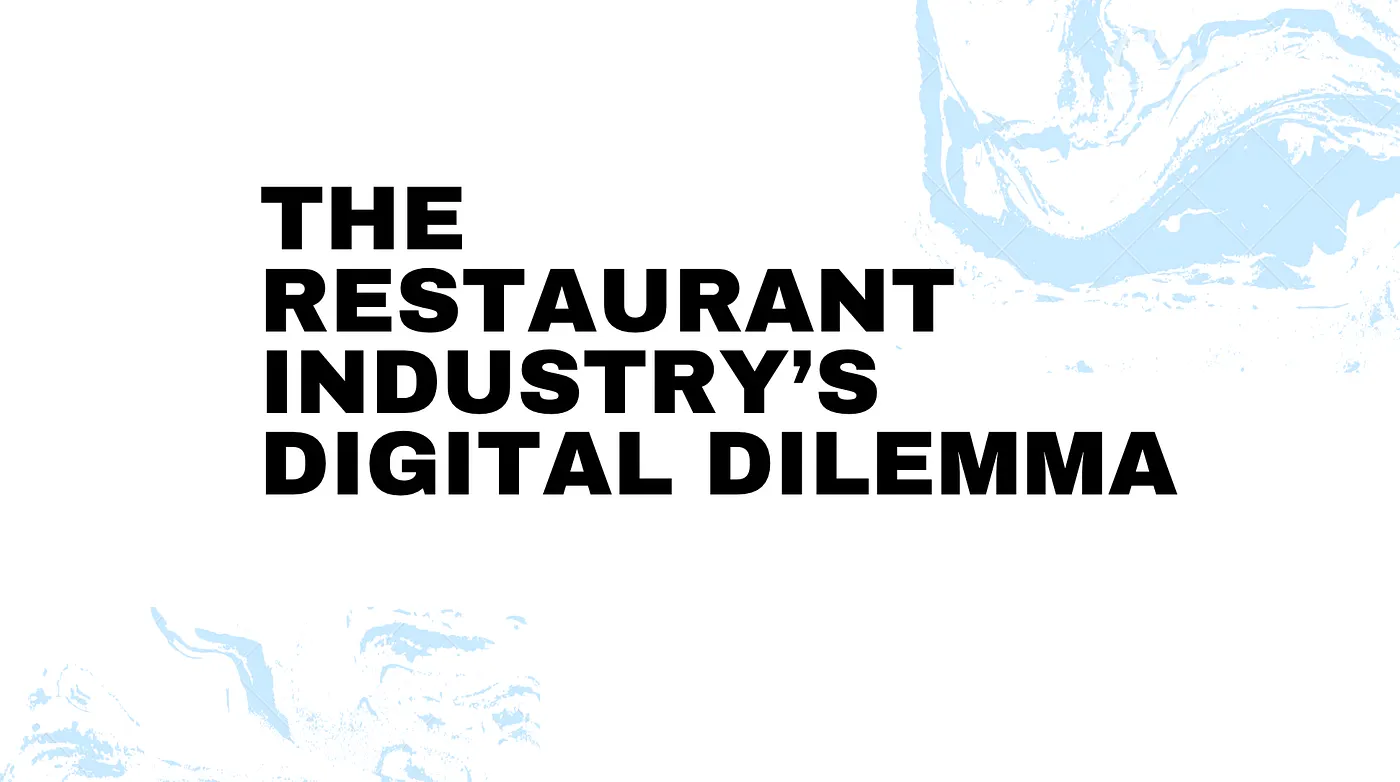
The rise of third-party platforms like Uber Eats, OpenTable, and Yelp
initially seemed like a win-win. They gave customers convenience and
gave restaurants a lot of exposure to a wider audience. These services
streamlined reservations, made online reviews more accessible, and
allowed smaller businesses to compete with larger chains in the
digital space. However, beneath the surface, a different reality
started to emerge.
Delivery commissions of 15–30% squeezed already thin margins, making
profitability a constant uphill battle for restaurants operating on
tight budgets. Restaurants were also no longer just competing on food
quality and service, they were now at the mercy of platform algorithms
determining their visibility.
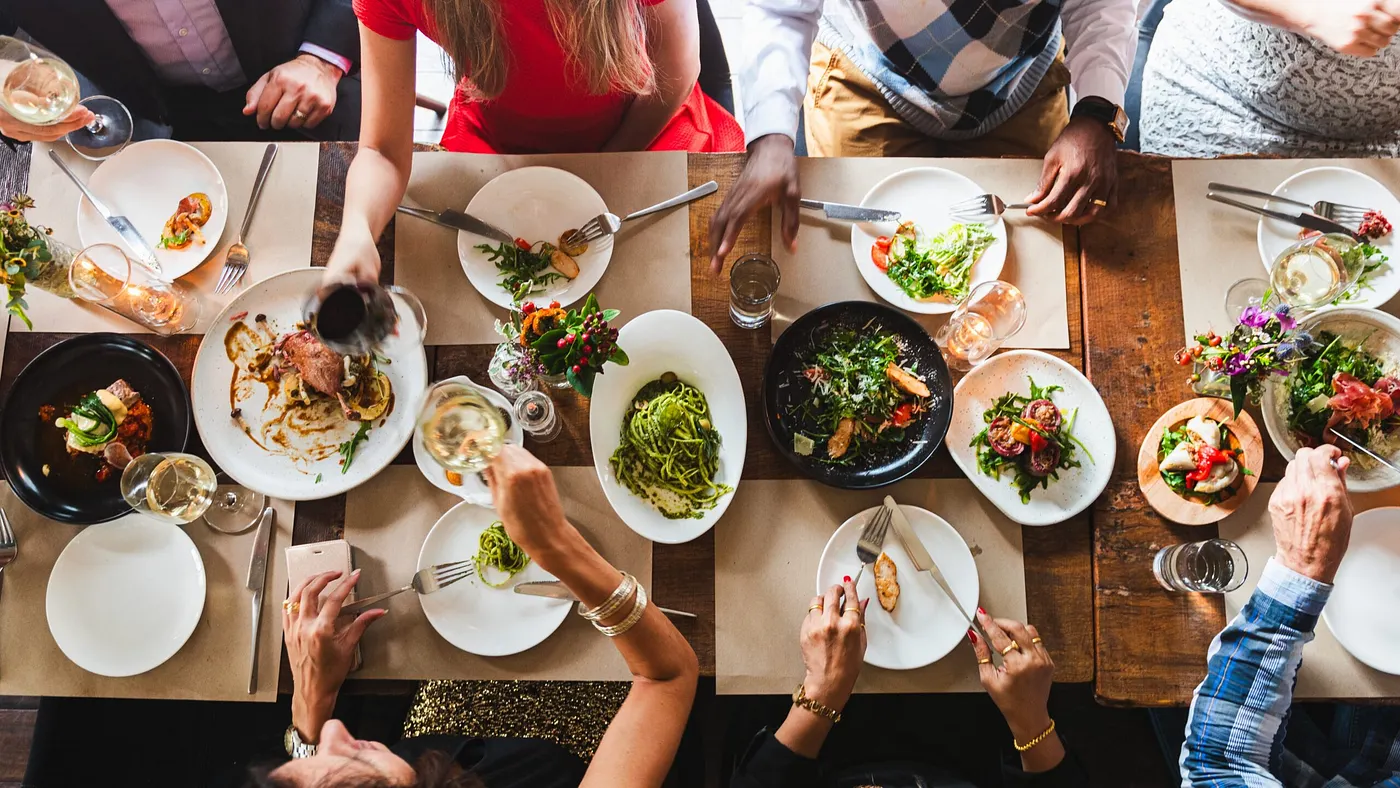
Customer data, which was once a restaurant’s most valuable asset, was
now owned by tech companies. The ability to analyze order history,
preferences, and dining habits was incredibly important for
personalized marketing and loyalty programs, but this data stayed
locked within the platforms. Restaurants couldn’t directly reach out
to their customers, which limited their ability to build genuine
long-term relationships and adapt to evolving consumer trends. Even
loyalty programs remained fragmented, and were locked within closed
ecosystems with no way for customers to trade or transfer rewards
across brands, which only further weakened customer retention.
For independent restaurants, the impact was even worse.
Without the marketing budgets of large chains, many felt trapped in a
system that prioritized platform profits over restaurant
sustainability. Third-party apps controlled menu pricing, determined
which businesses got visibility, and inserted themselves as the
default gatekeepers between restaurants and their own guests. Some
platforms even ran promotions or discounts on behalf of restaurants
without prior approval, cutting further into margins. This dependency
left a lot of restaurant owners feeling completely powerless, and
unable to operate on their own terms.
This isn’t simply a financial problem, it’s an existential one.
The ability to engage with customers directly is what turns a one-time
visitor into a loyal patron. However, under the current system,
restaurants are left fighting for scraps, and are unable to fully
capitalize on the relationships they work so hard to build. Some
restaurants have adapted by strengthening direct engagement through
messaging platforms and exclusive in-house events, but even these
efforts require strong incentives to shift customers away from
third-party platforms. In regions like China, where apps such as
Dianping and Douyin dominate the food industry, restaurants are forced
to play by the rules of these platforms to remain competitive.
Even when restaurants attempt to build their own digital
infrastructure, whether through first-party ordering systems,
membership programs, or social media engagement, the challenge is
ultimately still the same: getting customers to break their ingrained
habits. Third-party platforms are super convenient, widely adopted,
and deeply embedded into consumer behavior. Without compelling
incentives, most customers see very little reason to switch to direct
restaurant engagement, making it difficult for businesses to reclaim
their autonomy.
Restaurant owners are now actively seeking alternatives. We know that
the current model is flawed, so it becomes more about how restaurants
can break free from third-party reliance while still catering to the
familiar digital expectations of modern consumers.

Restaurants exploring Web3 in their business models are aiming to
reclaim customer relationships and unlock new revenue streams.
However, widespread adoption is still painfully slow.
A lot of restaurant owners acknowledge the potential of
decentralization, but practical implementation is still in its nascent
stages. While some forward-thinking establishments are exploring
on-chain solutions, the majority of restaurants are still pretty
hesitant, either due to lack of familiarity with the tech, regulatory
concerns, or uncertainty over its long-term viability.
For example, Web3 loyalty programs could allow customers to earn and
trade rewards across multiple brands, enhancing engagement and
retention. This kind of flexibility is something traditional systems
really struggle to offer, as most loyalty programs are locked within
single-brand ecosystems with little interoperability. The problem is
that most customers aren’t familiar with Web3, and onboarding them
smoothly becomes a huge challenge.
Without clear benefits that feel intuitive and effortless, most diners
will probably default to existing loyalty programs that they already
understand. This is something we believe will improve over time as
adoption increases and the masses become more familiar with crypto,
but long-term, this process shouldn’t even feel separate, it should be
abstracted into the Web2 world without the customer even realizing it.
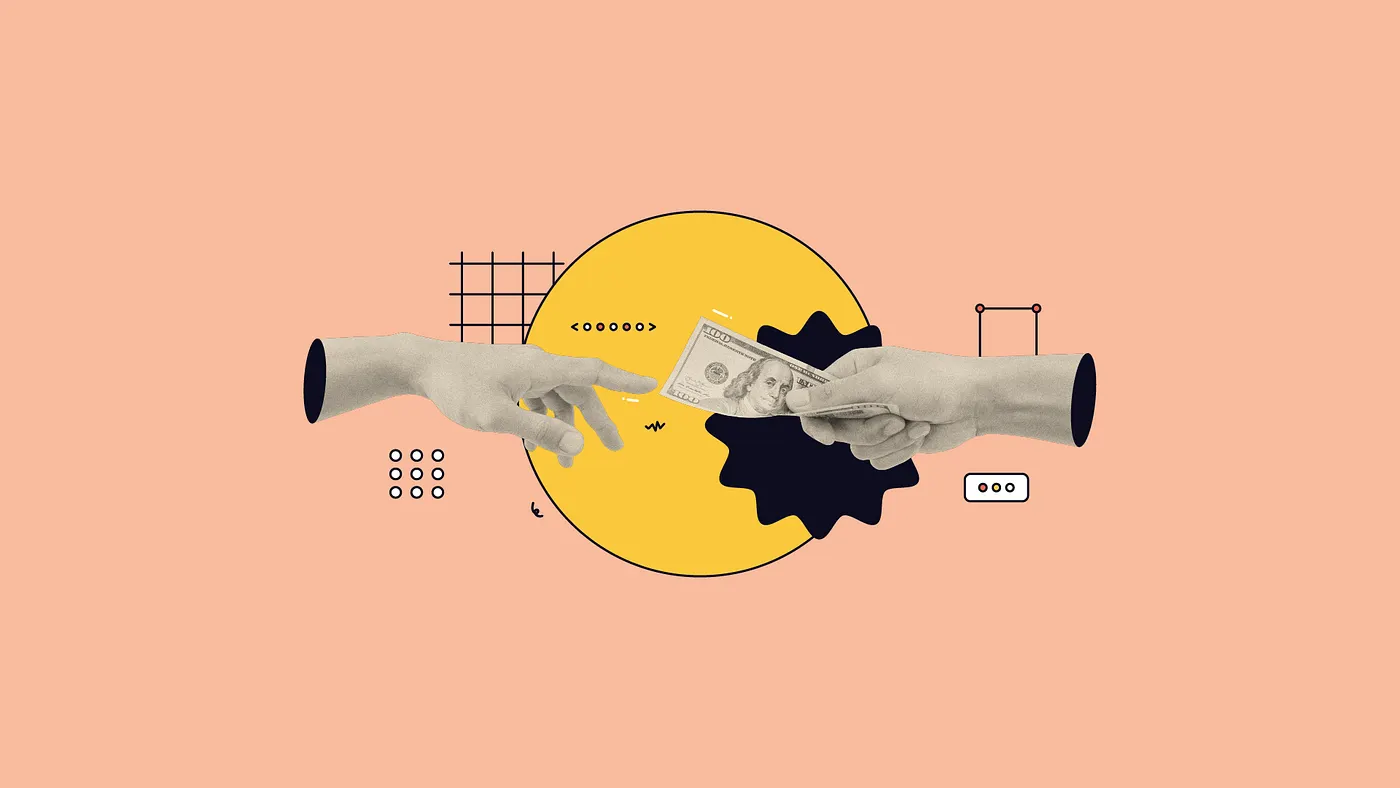
The current priority for many restaurants is to balance Web3 adoption
with the expectations of a non-crypto-savvy audience. A significant
portion of customers have never actually interacted with Web3 wallets
or digital assets, meaning any transition needs to be frictionless. If
a loyalty program requires multiple steps, app downloads, or a
completely unfamiliar transaction process, customers are unlikely to
participate in droves. This is one of the biggest hurdles Web3 faces
not just in F&B, but the entire space, and it’s not the technology
itself, but the user experience surrounding it.
So, how do we fix this?
Well, rather than replacing existing systems, restaurants could
integrate a hybrid approach with Web3 tools working alongside
traditional CRM and payment platforms. NFT-based memberships for VIP
customers, for example, could work in tandem with credit card-based
loyalty systems, gradually introducing Web3 benefits without requiring
a complete overhaul.
Some restaurants are already experimenting with this approach,
offering NFT-based dining perks while still accepting traditional
reservations and payments. Some high-end restaurants have introduced
limited-edition NFT memberships that offer priority bookings, access
to exclusive menus, and even personalized dining experiences with the
chef. These models enhance customer engagement and create new revenue
streams by allowing memberships to be resold or transferred, something
traditional loyalty programs are unable to support.
The issue we have is that until it becomes more intuitive for
mainstream users, most restaurants will continue using Web3 as an
optional enhancement rather than a core business function.
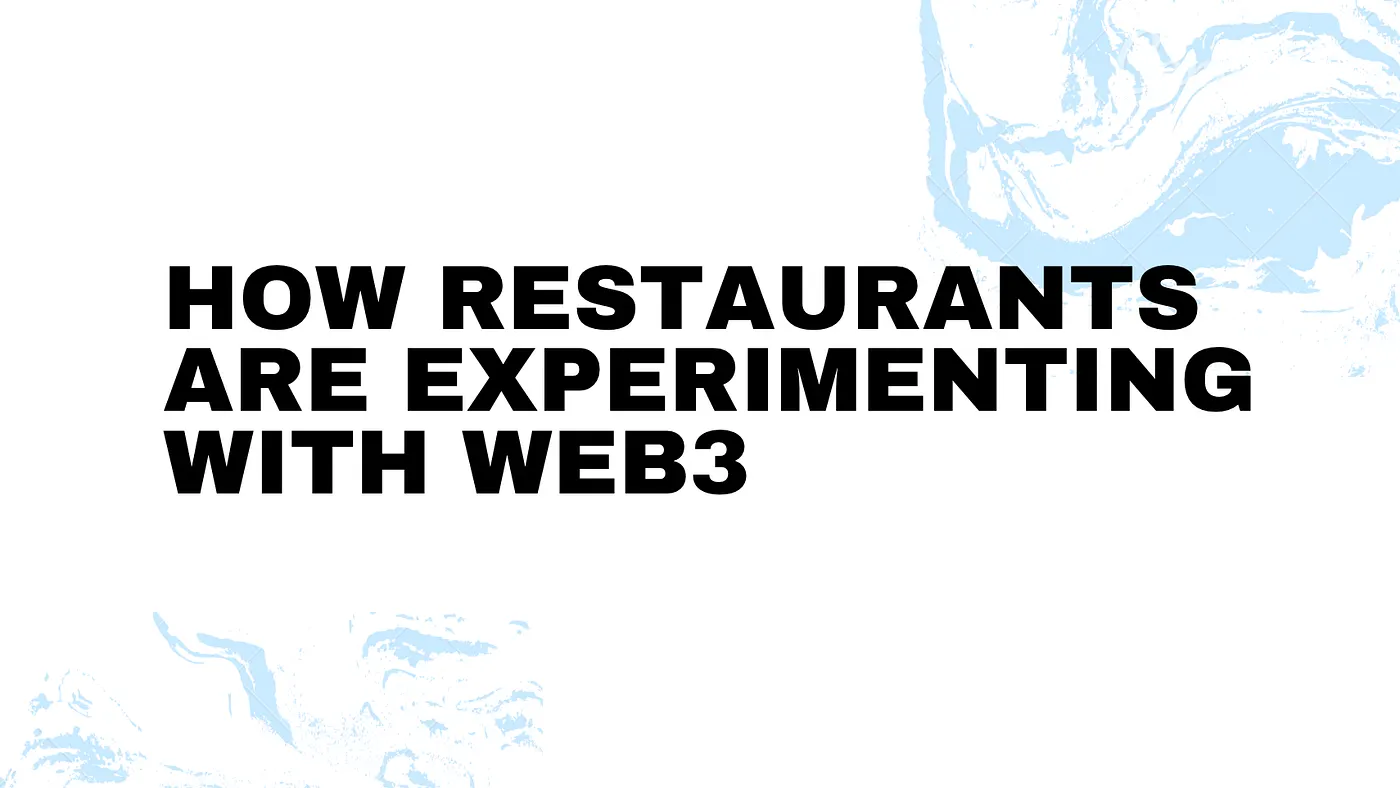
Despite the challenges, some early adopters are seeing promising
results. Fine-dining establishments have introduced NFT-based
memberships that grant holders exclusive event access, priority
reservations, and unique menu offerings. In these cases, NFTs function
more as access passes than speculative assets, adding real-world value
to the dining experience. Customers who invest in these memberships
gain tangible perks, and at the same time, restaurants create an
additional revenue stream that isn’t tied to daily sales volume. Some
restaurants have even experimented with tiered NFT memberships, where
different levels of ownership unlock progressively better benefits,
enabling long-term customer loyalty.
Other restaurants are testing on-chain reservations, where customers
put down smart contract deposits to secure tables, reducing the issue
of no-shows. This approach has worked particularly well in high-demand
dining spots, where last-minute cancellations can lead to significant
lost revenue. Requiring guests to commit funds in advance allows
restaurants to create a fairer system where availability is guaranteed
for serious diners, and cancellations become less disruptive. Some
proposed models allow customers to resell or transfer reservations,
potentially creating a secondary market for premium dining
experiences.
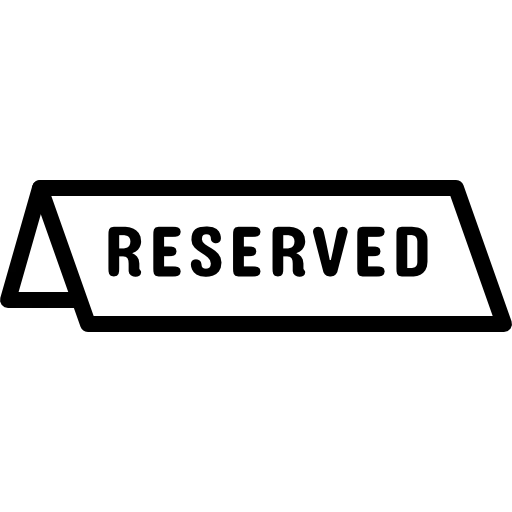
Beyond reservations and memberships, Web3 is also being used for
customer engagement and brand building. A growing number of
restaurants are experimenting with tokenized loyalty programs that
reward customers for repeat visits, social media promotion, or
participation in community events. Unlike traditional loyalty points,
these rewards can be stored, traded, or even combined across multiple
partner establishments. This interoperability makes them more valuable
to customers and increases the likelihood of ongoing engagement.
Some forward-thinking businesses are also integrating Web3 for supply
chain transparency, allowing customers to verify ingredient sourcing,
sustainability efforts, and ethical production practices. Placing key
product data on-chain allows restaurants to offer verifiable proof of
farm-to-table claims, which can appeal to the increasingly conscious
consumers who actually care about where their food comes from. While
still a niche use case, this technology has the potential to reshape
consumer trust in food quality and sourcing.
Many of these implementations are still in their early phases, but
they do indicate a growing willingness among restaurant owners to
explore new strategies. The key challenge is still about usability,
making sure that customers can engage with these systems as easily as
they would with a traditional app or website. Over time, Web3 tools
will become more effortless, and as customer adoption increases, these
experimental models could evolve into standard practices that define
the future of the restaurant industry.
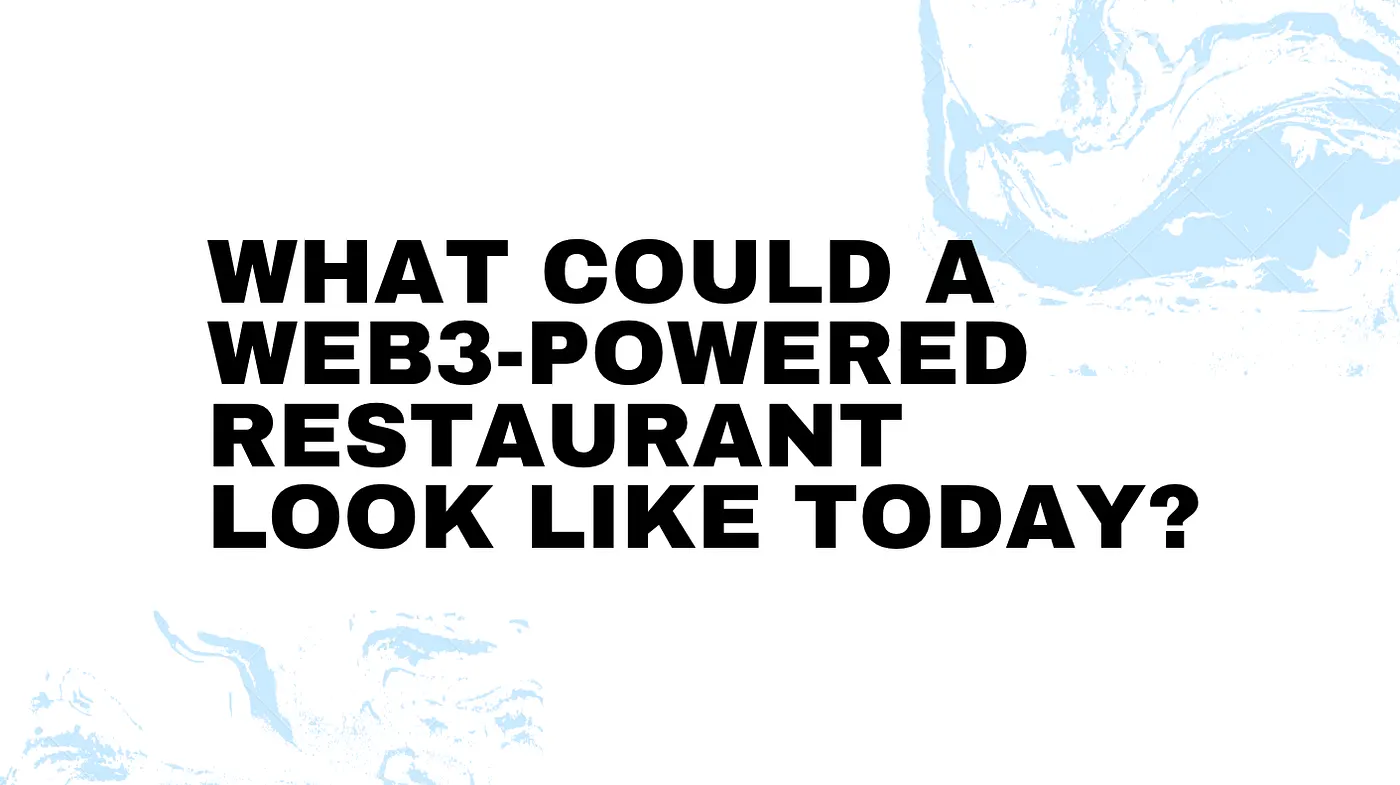
If a new restaurant were launching in 2025 with Web3 infrastructure
built in from day one, what would that look like?
This wouldn’t just be a traditional restaurant with a few Web3
integrations tacked on, it would be a fully digital-first experience,
where customer engagement, loyalty, and operations are structured
around a suite of decentralized tools. Instead of relying on
third-party platforms for marketing, reservations, and customer
management, the restaurant could operate with a direct-to-customer
model, using blockchain to build stronger, long-term relationships.
Here are a few ways this model might play out:
On-Chain Loyalty Systems
Customers earn blockchain-based tokens for dining, referring friends,
or engaging on social media. These tokens aren’t limited to one
restaurant, they’re interoperable across a network of participating
businesses. Unlike traditional points programs that expire or remain
locked to a single brand, tokenized rewards can be used at partnered
establishments, increasing their overall value and encouraging repeat
business.
NFT Memberships
Instead of static rewards programs, premium customers hold NFT-based
memberships that unlock exclusive perks, such as private chef
experiences, priority reservations, and VIP seating. Some high-end
restaurants have already experimented with lifetime NFT dining
memberships, allowing holders access to private events or special
menus. Unlike conventional loyalty programs, these memberships can be
resold or transferred, allowing customers to extract value if their
dining habits change.
Decentralized Identity for Reservations
No more fake bookings or bot-driven scalping. DID means that real
customers secure high-demand tables, with deposits managed
transparently through smart contracts. Customers could have verifiable
dining profiles, enabling restaurants to tailor personalized
experiences without collecting excessive private data. As previously
mentioned, a system like this could also reduce no-shows, as
reservations could require tokenized deposits that are refunded only
upon attendance or fair cancellations.
Web3-Powered Supply Chain Transparency
Customers can verify ingredient sourcing, sustainability efforts, and
fair-trade certifications, all on-chain. Integrating transparent,
verifiable tracking into food procurement, restaurants can appeal to
increasingly conscious consumers who prioritize ethical and
sustainable sourcing. This would also help restaurants differentiate
themselves in a competitive market by providing proof of quality and
authenticity.
Cross-Brand Partnerships
A restaurant group could partner with coffee shops, wine bars, or
supermarkets, allowing customers to redeem rewards across multiple
businesses without an intermediary. This could actually extend beyond
F&B, creating an ecosystem where dining tokens could be used for
entertainment, travel, or retail experiences. A partnership model like
this would increase customer retention across industries and drive
additional engagement.
The key to success in a Web3-powered restaurant is making sure that
these innovations enhance, not complicate the customer experience.

Web3 offers a lot of exciting possibilities, but it needs to be
effortlessly integrated into existing consumer habits. Customers will
be less inclined to adopt a new system if it doesn’t feel as
convenient as traditional alternatives. This is why many restaurant
owners experimenting with Web3 are focusing on hybrid approaches,
where Web3 tools can run in parallel with traditional loyalty programs
and payment methods.
For example, a restaurant could implement a tokenized loyalty system
but still allow customers to redeem rewards through their phone number
or email, rather than requiring them to set up a crypto wallet.
Similarly, NFT memberships could be sold using fiat currency, but
still grant access to blockchain-verified benefits.
These incremental steps can help bridge the gap between traditional
diners and Web3 early adopters.
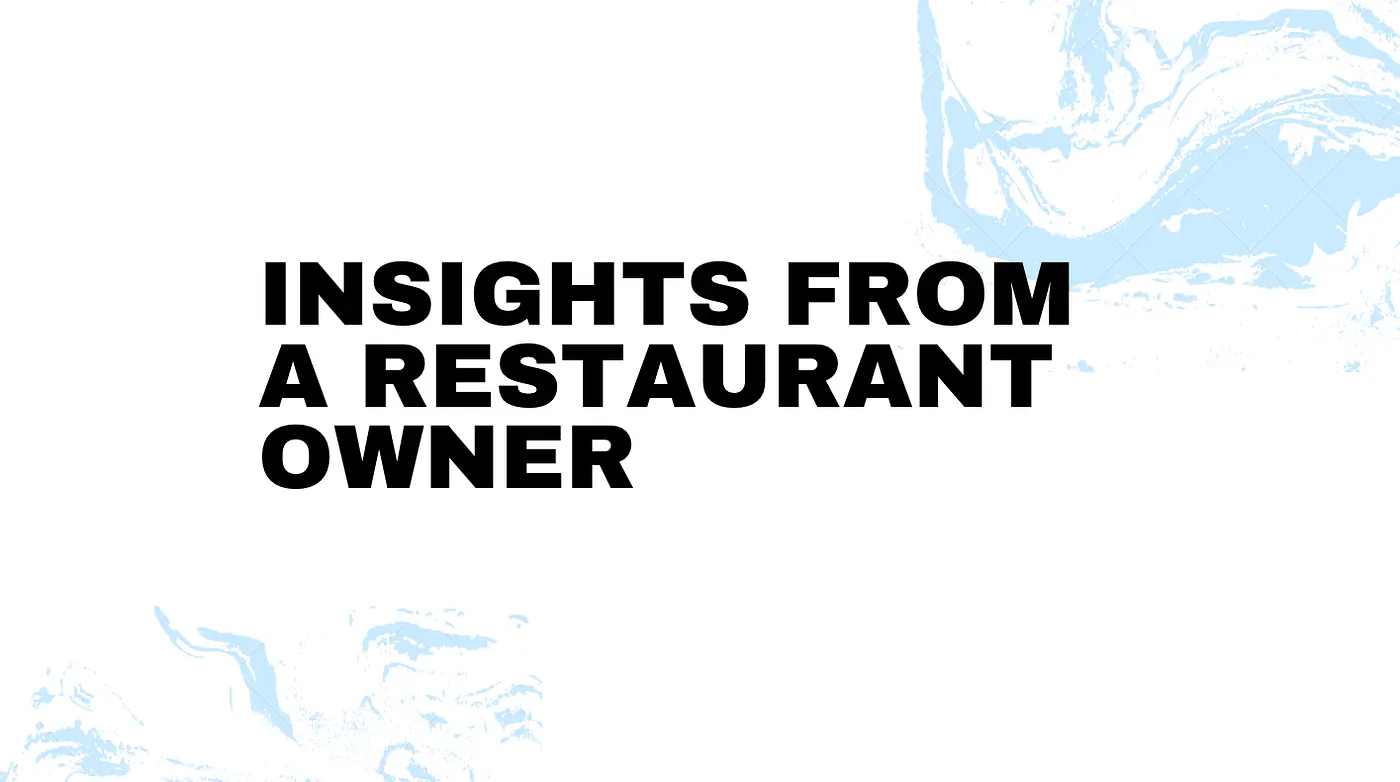
As Web3 adoption in the F&B industry grows, some restaurants have
already explored different Web3 strategies. But what does this shift
look like from the perspective of an actual restaurant operator?

To gain a clearer understanding, we caught up with Miguel, the owner
of MAYA, a restaurant where he’s had firsthand experience integrating
technology into the business:
Customer behavior and economic shifts have reshaped the F&B industry.
How do you feel these changes have influenced how restaurants approach
growth and innovation?
The last few years have forced restaurants to be more agile than ever.
Economic shifts and changing customer habits — especially
post-pandemic — have accelerated digital transformation.
For many of us, survival meant optimizing delivery, investing in CRM
tools, and focusing on community-driven marketing. Growth today is
less about expanding physical locations and more about creating a
brand that resonates across multiple online and offline channels.
Third-party platforms dominate reservations, delivery, and reviews.
How are restaurants strengthening direct customer relationships
through their own online channels and tech, and what challenges do
they face in reducing reliance on these platforms?
Third-party platforms have become unavoidable, but they also take
significant margins and limit direct customer interaction. At MAYA,
we’ve focused on strengthening our direct relationships through
WeChat, and exclusive in-house events. In China, Dianping, Little Red
Book, and
Douyin remain hugely influential in directing customer traffic, and
most restaurants currently focus their marketing efforts via these
platforms. The challenge, though, is that customers are accustomed to
the convenience of third-party apps, and driving them to proprietary
platforms requires strong incentives — whether through personalized
offers, loyalty rewards, or unique content.
Which Web3 applications, such as loyalty programs, reservations, or
event access, do you think hold the most immediate potential for
restaurants?
If Web3 adoption were higher, I could see tokenized loyalty programs
being a game-changer, offering customers ownership in a way that
traditional point systems can’t. NFT-based memberships for exclusive
dining experiences or event access could also create a stronger sense
of community. But in practice, I think we’re still far from mainstream
adoption, particularly in China and broader Asia.
What tangible benefits have Web3 tools brought to restaurants in terms
of efficiency, customer retention, or revenue?
For now, I haven’t seen Web3 tools making a significant impact on
efficiency or revenue in this space — at least not in a way that
traditional tech can’t already achieve. While blockchain-based loyalty
programs and transparent supply chain tracking sound promising, the
infrastructure and consumer adoption just aren’t there yet, especially
compared to existing solutions that work smoothly today.
If you were launching a new restaurant today in Hong Kong or Southeast
Asia, how would you integrate Web3 from the start?
I’d focus on hybrid solutions rather than going all-in on Web3. Maybe
an NFT-based VIP membership or tokenized rewards for early supporters,
but it would have to be user-friendly and work alongside traditional
payment and CRM systems. The challenge is that most customers still
don’t have crypto wallets or familiarity with Web3, so any integration
needs to feel seamless rather than forcing education on the consumer.
Have you seen any specific examples of F&B businesses that have
successfully integrated Web3, and if so, what do you think made their
approach effective?
I’ve seen some brands experiment with NFT memberships and tokenized
rewards, but very few have achieved long-term success. The ones that
work best are those tied to strong communities — where the NFT or
token actually provides real-world value beyond speculation. For
example, I’ve understood that certain restaurants using NFTs for
priority reservations and private events have made it work, but these
are niche cases rather than industry-wide trends. I also don’t have
reliable data on this.
What excites you most about Web3’s potential in the restaurant
industry, and what gaps still need to be addressed for its adoption?
The idea of decentralized loyalty programs and tokenized brand
ownership is exciting, but the biggest gap is usability and consumer
adoption. If Web3 can integrate more smoothly into existing payment
and CRM systems, then we’ll see more traction. Until then, it remains
a niche experiment rather than a core business tool for most
restaurants.

For Web3 to gain traction in the restaurant industry, three important
barriers need to be addressed:
Usability
The average customer doesn’t have a crypto wallet or understand
blockchain mechanics. Web3 needs to be as intuitive as scanning a QR
code or using a credit card. Web3-natives may be comfortable with
digital wallets and token transactions, but mainstream customers
expect a frictionless experience. To bridge this gap, restaurants need
solutions that abstract away the complexity of blockchain.
This could mean using social login-based wallet creation, or allowing
customers to interact with on-chain loyalty programs without
downloading a dedicated crypto wallet. Some businesses are already
experimenting with gasless transactions to remove the need for users
to understand blockchain fees. The goal is to integrate Web3 into the
existing customer experience so easily that diners engage with it
without even realizing it.
Regulatory Uncertainty
Tokenized loyalty programs and NFT memberships operate in a legal gray
area in many regions. Restaurants need clear compliance frameworks
before deciding to commit to and scale Web3 initiatives. Depending on
the jurisdiction, some tokenized rewards might raise legal or tax
questions , especially if they’re tradable or imply future value, so
restaurants need to carefully assess how they structure these
programs.
The current regulatory landscape is definitely shifting into a more
positive light, and early adopters are working with legal experts to
structure their programs in a way that avoids financial regulation
pitfalls while still providing tangible value to customers.
Tech Integration
The simple fact is that existing POS and CRM systems aren’t built for
blockchain. Web3 tools need to integrate smoothly with traditional
restaurant software rather than forcing a full transition. For
example, many restaurants use legacy reservation and ordering systems
that don’t have native blockchain support.
The challenge is finding middleware solutions that allow Web3 loyalty
programs, NFT memberships, and decentralized identity verification to
work alongside existing restaurant infrastructure. Some startups are
already developing API-based Web3 integrations that can be plugged
into traditional POS systems, enabling Web3 features without requiring
restaurants to overhaul their entire tech stack.
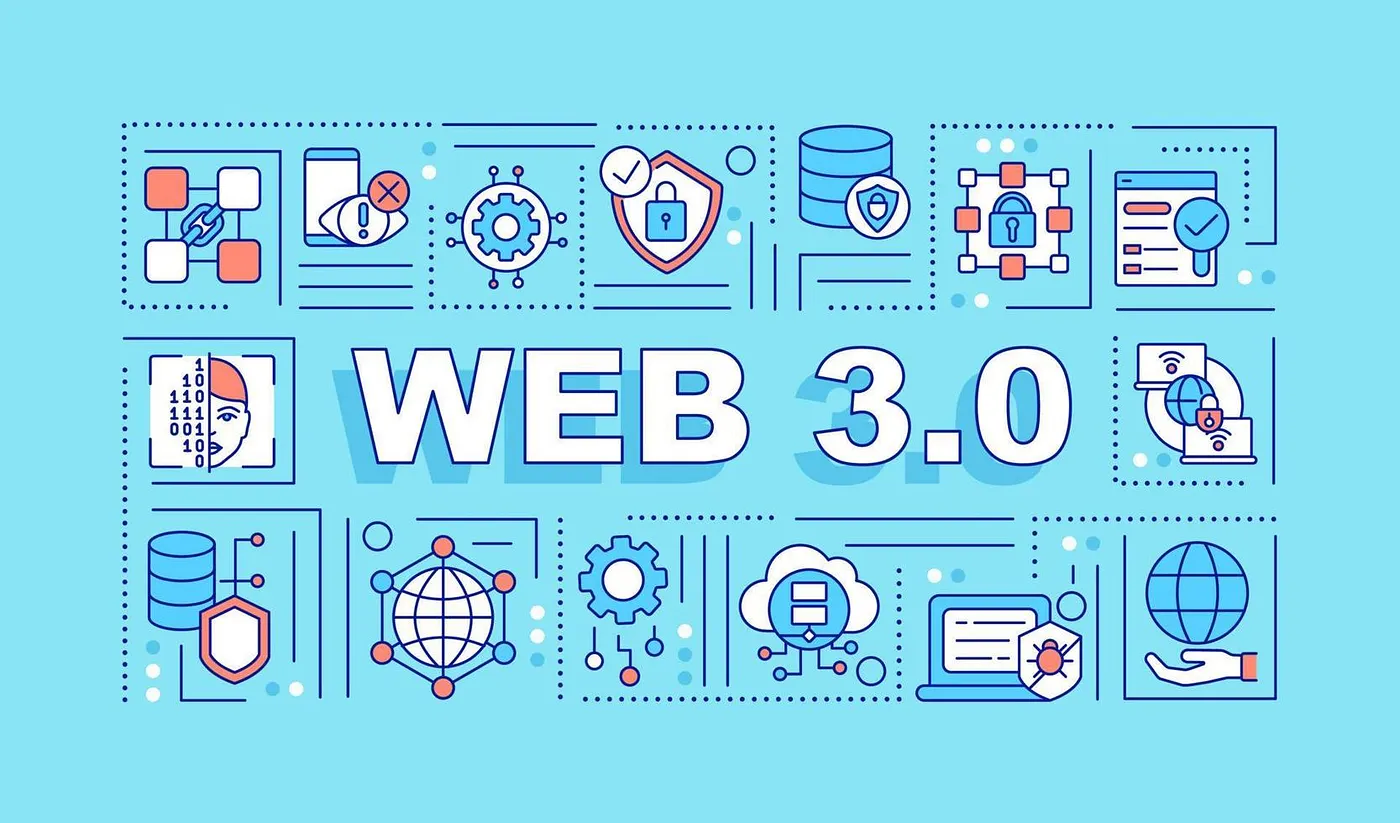
Beyond these core challenges, there’s also the issue of customer
education. Web3 provides so many powerful tools for decentralization
and ownership, but to be frank, most diners are unfamiliar with the
benefits. Unlike industries where Web3 adoption has already taken
hold, such as gaming or digital art, the restaurant sector is still
lagging and figuring out how to communicate Web3’s value proposition
in a way that resonates with everyday customers.
Education needs to happen organically, through actual experiences
rather than complicated explanations.
Despite these challenges, dissatisfaction with third-party platforms
is driving restaurants to seek alternatives. A lot of restaurant
owners recognize that the current system, where platforms take a
significant cut of revenue while controlling customer interactions, is
unsustainable in the long run. Web3 doesn’t have to replace existing
systems overnight, it can complement them, offering new ways to engage
customers, reduce costs, and build sustainable business models. As
more restaurants experiment with Web3 solutions and real-world case
studies emerge, adoption is more than likely going to accelerate.
For restaurants that put in the work and successfully navigate these
barriers, the benefits could be substantial. Not only can Web3-based
models provide greater revenue control, but they also provide new ways
to build customer relationships that extend beyond simple
transactions. The shift won’t happen overnight, but as the industry
looks for alternatives to platform dependence, Web3-powered solutions
are likely to play an increasing role in reshaping the restaurant
business.















